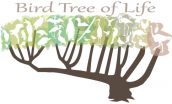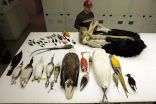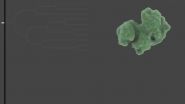(Press-News.org) A new computational technique developed at The University of Texas at Austin has enabled an international consortium to produce an avian tree of life that points to the origins of various bird species. A graduate student at the university is a leading author on papers describing the new technique and sharing the consortium's findings about bird evolution in the journal Science.
The results of the four-year effort -- which relied in part on supercomputers at the university's Texas Advanced Computing Center (TACC) -- shed light on the timing of a "big bang" in bird evolution, rearrange evolutionary relationships between some bird species and provide new insights on the origins of song pattern recognition in birds, as well as a host of other avian traits.
To build the new bird tree of life, researchers first sequenced the complete genomes of 48 living bird species. With about 14,000 genomic regions per species, the size of the data sets and the complexity of analyzing them required a new computing method, which was led by computer scientists Tandy Warnow, an adjunct professor at The University of Texas at Austin and professor at the University of Illinois at Urbana-Champaign; and Siavash Mirarab, a graduate student at The University of Texas at Austin.
Previous bird evolutionary trees were based on analyses of a few dozen genes as opposed to this latest study, which analyzed entire bird genomes. Those earlier studies did use more bird species (about 200 compared with 48), but with hundreds of times more genetic data per species in the latest study, the new bird family tree draws from far more data, resulting in some surprising findings such as that flamingoes are more closely related to pigeons than to pelicans and other water birds.
"In the computer science community, we often focus on how to make faster tools to analyze big data sets," said Mirarab, co-lead author on one of Science's major papers about the project. "This project is exciting because it shows that it's not just about being bigger and faster. Simply having more data doesn't make you more accurate. You have to come up with more intelligent ways to analyze your data."
By testing the new technique, called statistical binning, on simulated data sets, the team demonstrated that their approach is more accurate than previous techniques.
The entire effort to construct an avian evolutionary tree took 400 years of CPU time and required the use of parallel processing supercomputers at TACC, the Munich Supercomputing Center and the San Diego Supercomputing Center. For the statistical binning portion alone, developing and testing the method took over 100 years of CPU time, divided between TACC and the Condor Cluster in the university's Department of Computer Science.
"TACC was essential," said Mirarab. "It's where most of the work on the statistical binning paper was done. We couldn't have done it without these supercomputers."
Mirarab and Warnow are part of the Avian Phylogenomics Consortium, which has so far involved more than 200 scientists from 80 institutions in 20 countries.
The consortium is led by Guojie Zhang of the National Genebank at BGI in China and the University of Copenhagen, Erich D. Jarvis of Duke University and the Howard Hughes Medical Institute, and M. Thomas P. Gilbert of the Natural History Museum of Denmark.
The group's first findings are being reported nearly simultaneously in 23 papers -- eight in a Dec. 12 special issue of Science and 15 more in Genome Biology, GigaScience and other journals.
Mirarab was also co-lead author on a paper in the Proceedings of the National Academy of Sciences in October that used a different computational technique to reveal important details about key transitions in the evolution of plant life on our planet.
INFORMATION:
The National Science Foundation and the Howard Hughes Medical Institute funded Warnow and Mirarab.
For an interactive graphic of the new bird tree of life, contact scipak@aaas.org.
RIVERSIDE, Calif. - The absence of teeth or "edentulism" has evolved on multiple occasions within vertebrates including birds, turtles, and a few groups of mammals such as anteaters, baleen whales and pangolins. Where early birds are concerned, the fossil record is fragmentary. A question that has intrigued biologists is: Based on this fossil record, were teeth lost in the common ancestor of all living birds or convergently in two or more independent lineages of birds?
A research team led by biologists at the University of California, Riverside and Montclair State University, ...
LOS ANGELES, Dec. 11, 2014-- It's possible to lastingly persuade conservative voters to support a controversial issue like marriage for same-sex couples--and at a greatly accelerated rate compared to their neighbors--according to groundbreaking data published in this week's issue of the peer-reviewed journal Science. The 12-month study also shows how the Los Angeles LGBT Center's voter persuasion methods reduced anti-gay prejudice and may have the potential to reduce other forms of prejudice.
The independent researchers who led the study, prominent Columbia University ...
This news release is available in Danish and also Chinese on EurekAlert! Chinese.
An international effort to sequence the genomes of 45 avian species has yielded the most reliable tree of life for birds to date. This new avian family tree helps to clarify how modern birds--the most species-rich class of four-limbed vertebrates on the planet--emerged rapidly from a mass extinction event that wiped out all of the dinosaurs approximately 66 million years ago.
It reveals how some of the earliest bird species diverged, answering many long-standing questions about the common ...
SALT LAKE CITY, Dec. 11, 2014 - University of Utah researchers ran biochemical analysis and computer simulations of a livestock virus to discover a likely and exotic mechanism to explain the replication of related viruses such as Ebola, measles and rabies. The mechanism may be a possible target for new treatments within a decade.
"This is fundamental science. It creates new targets for potential antiviral drugs in the next five to 10 years, but unfortunately would not have an impact on the current Ebola epidemic" in West Africa, says Saveez Saffarian, senior author of ...
(SALT LAKE CITY) - Examination of DNA from 21 primate species - from squirrel monkeys to humans - exposes an evolutionary war against infectious bacteria over iron that circulates in the host's bloodstream. Supported by experimental evidence, these findings, published in Science on Dec. 12, demonstrate the vital importance of an increasingly appreciated defensive strategy called nutritional immunity.
"We've known about nutritional immunity for 40 years," says Matthew Barber, Ph.D., first author and postdoctoral fellow in human genetics at the University of Utah. "What ...
How birds evolved to have characteristics including feathers, flight and song is revealed with new clarity in a major study of their family tree.
The international study charts a burst of evolution that took place after the mass extinction of dinosaurs, 66 million years ago. This step-change gave rise to nearly all of the species of birds that we see on the planet today - more than 10,000 varieties.
The four-year project - which included researchers from the University of Edinburgh's Roslin Institute - decoded and compared the entire genetic fingerprint of 48 bird species. ...
Two penguin genomes have been sequenced and analyzed for the first time in the open access, open data journal GigaScience. Timely for the holiday season, the study reveals insights into how these birds have been able to adapt to the cold and hostile Antarctic environment.
Antarctic penguins are subject to extremely low temperatures, high winds, and profound changes in daylight. They have developed complicated biological systems to regulate temperature and store energy for long-term fasting. Most studies have focused on the physiological and behavioral aspects of their ...
DURHAM, N.C. -- His office is filled with all sorts of bird books, but Duke neuroscientist Erich Jarvis didn't become an expert on the avian family tree because of any particular interest in our feathered friends. Rather, it was his fascination with how the human brain understands and reproduces speech that brought him to the birds.
"We've known for many years that the singing behavior of birds is similar to speech in humans -- not identical, but similar -- and that the brain circuitry is similar, too," said Jarvis, an associate professor of neurobiology at the Duke ...
VIDEO:
A microscopy system continuously measures responses to signaling chemicals in thousands of cells at a time.
Click here for more information.
Scientists have discovered a general principle for how cells could accurately transmit chemical signals despite high levels of noise in the system, they report in Science this week.
A cell's response to outside chemical signals depends on its physiological state, which can fluctuate considerably. Amounts of different kinds ...
The entire semiconductor industry, not to mention Silicon Valley, is built on the propensity of electrons in silicon to get kicked out of their atomic shells and become free. These mobile electrons are routed and switched though transistors, carrying the digital information that characterizes our age.
An international team of physicists and chemists based at the University of California, Berkeley, has for the first time taken snapshots of this ephemeral event using attosecond pulses of soft x-ray light lasting only a few billionths of a billionth of a second.
While ...





